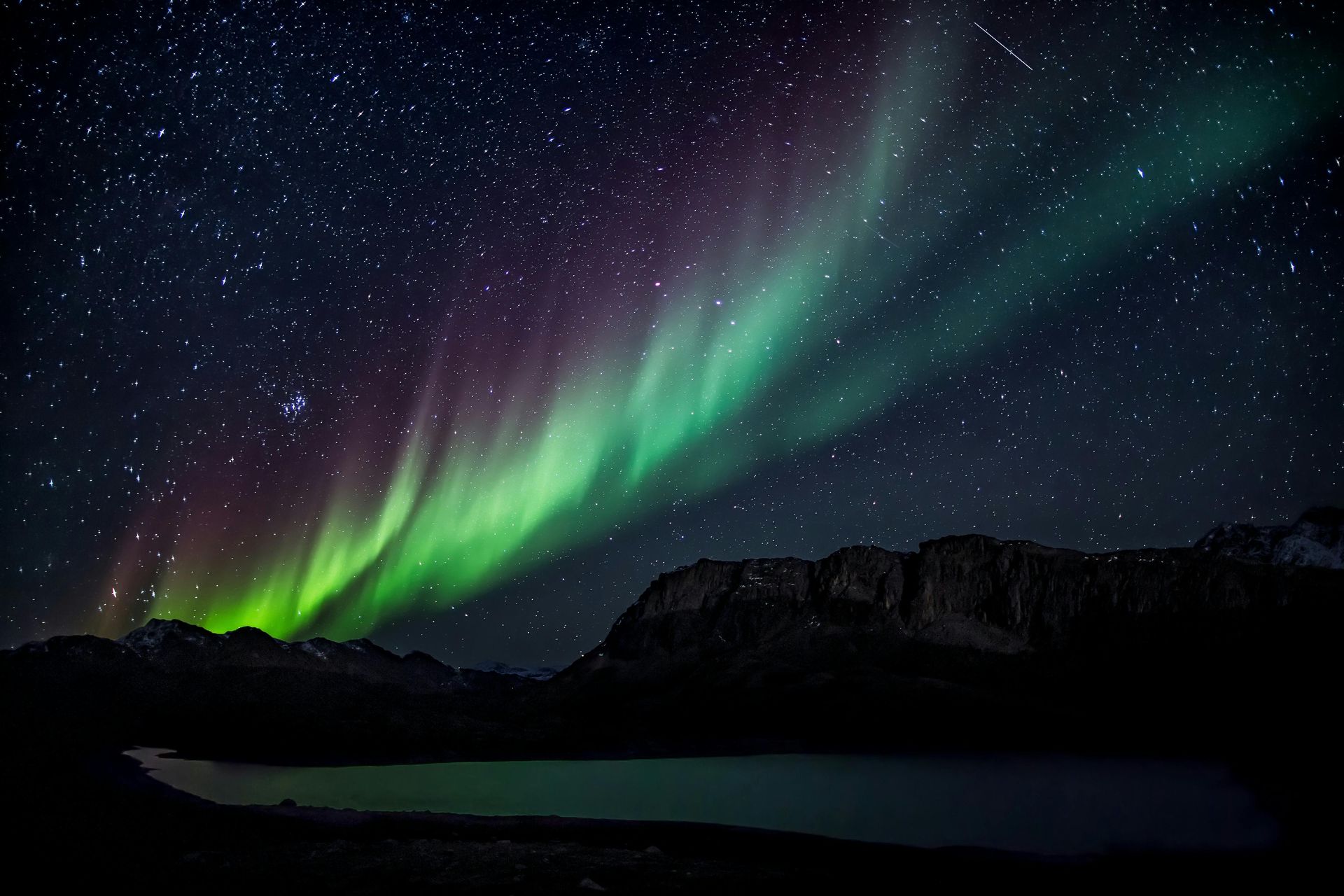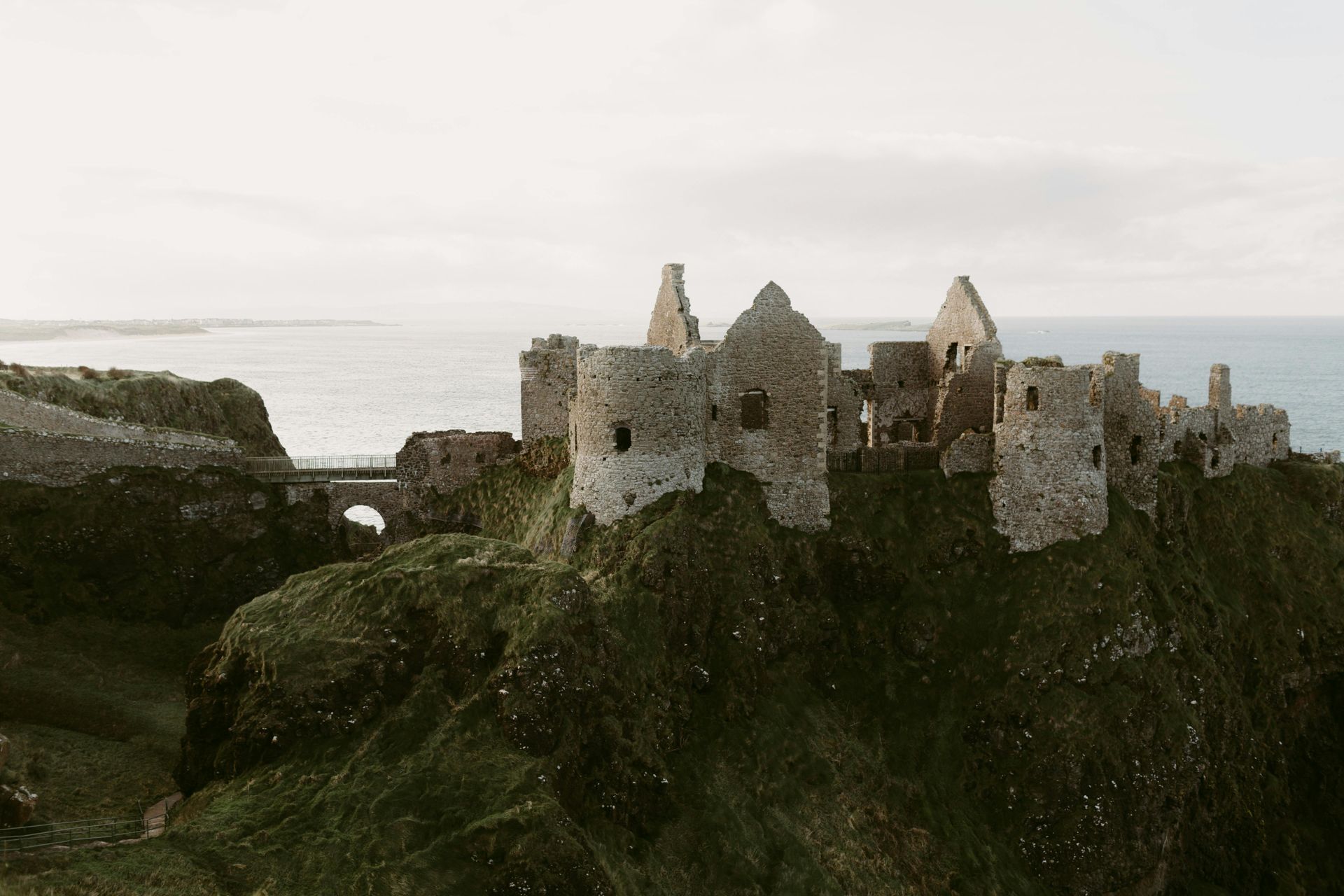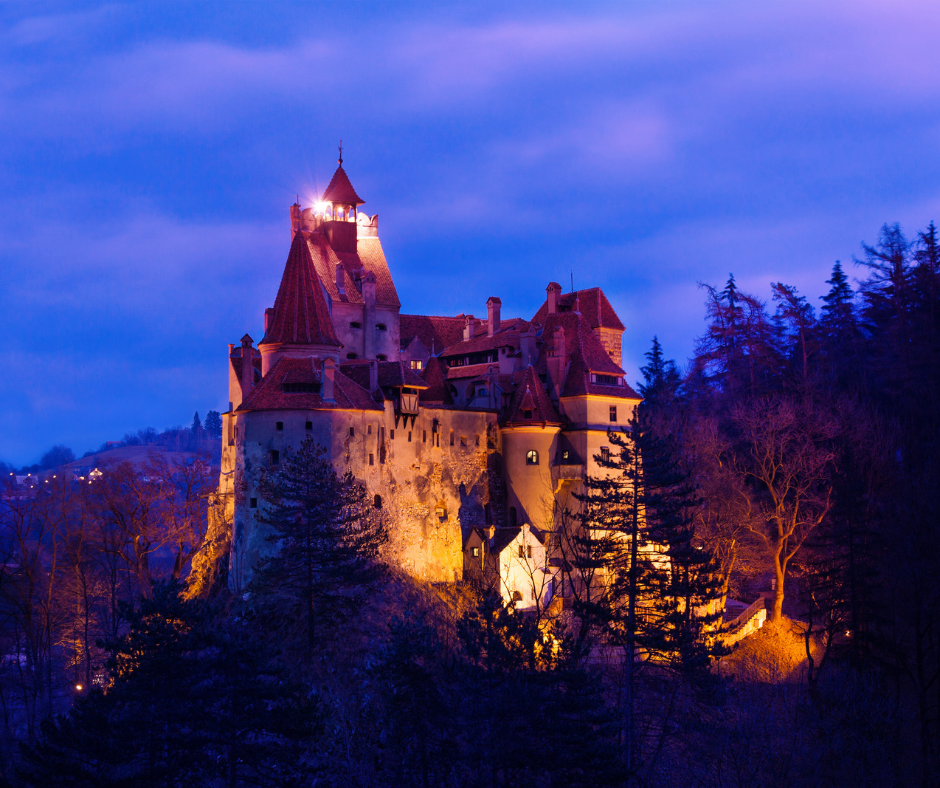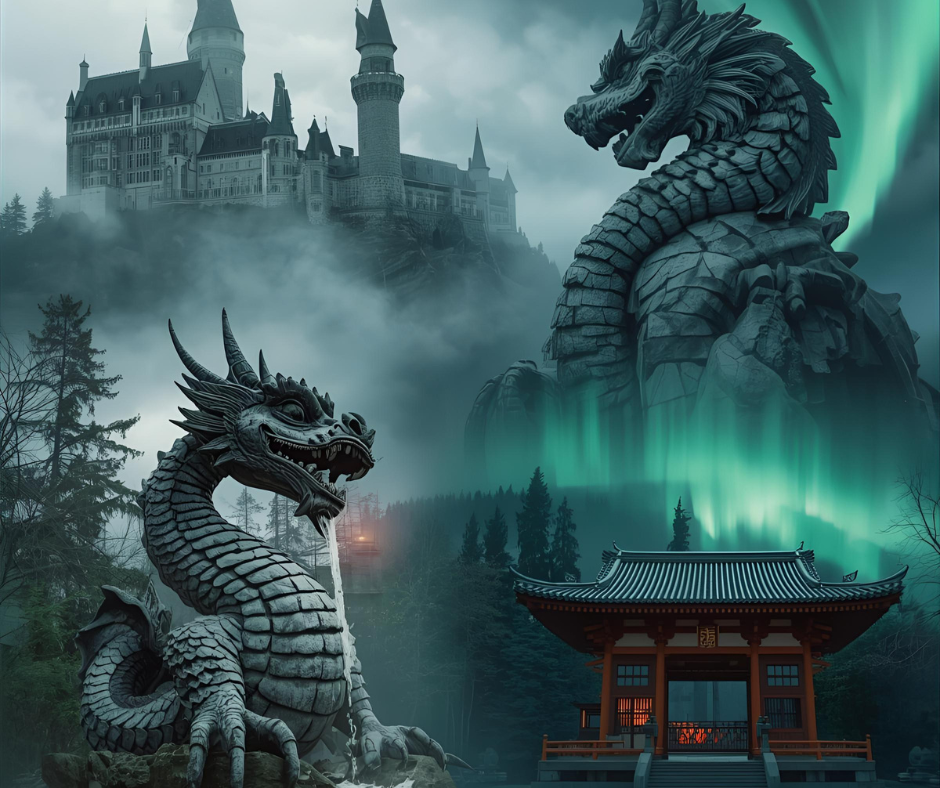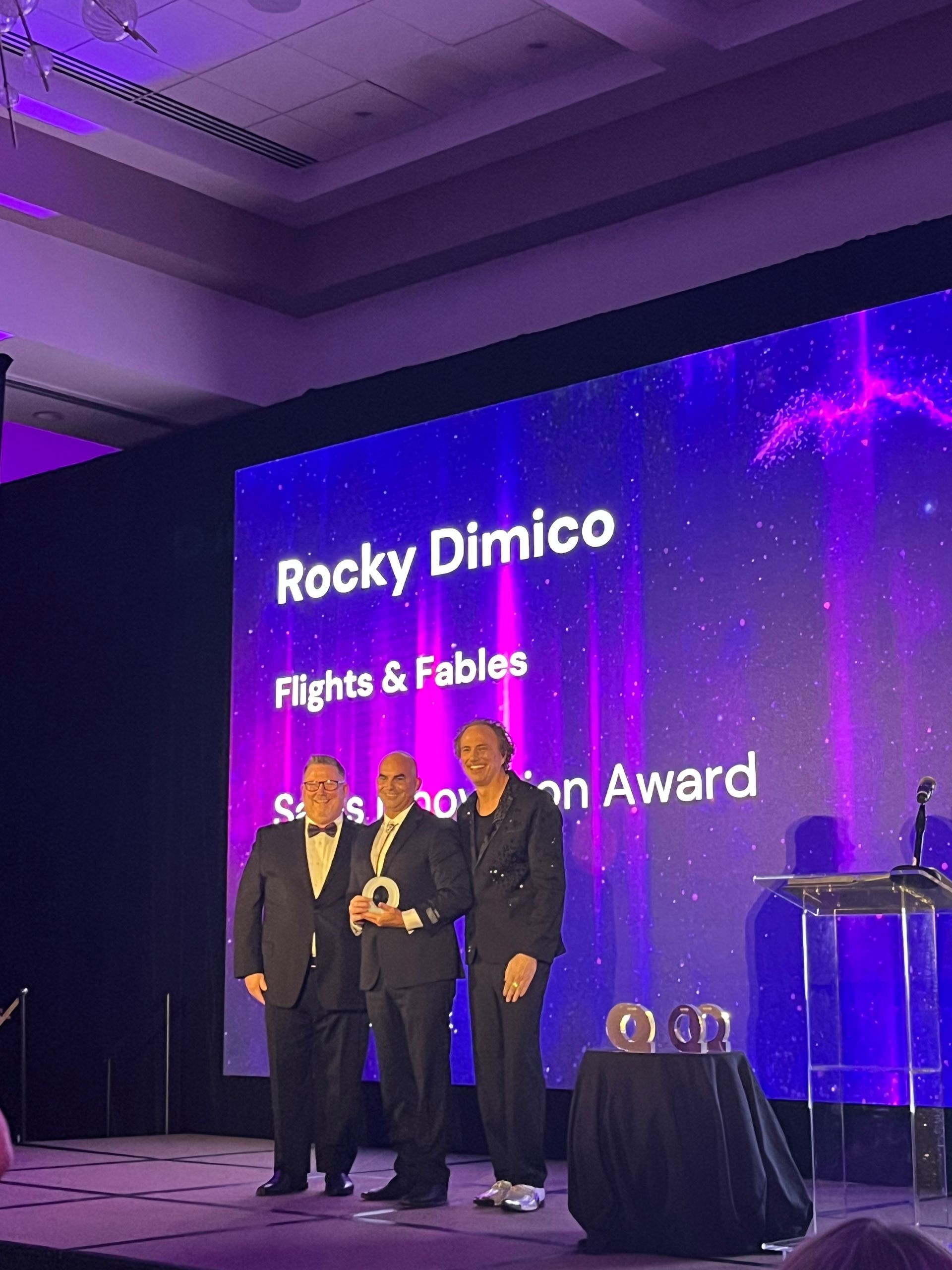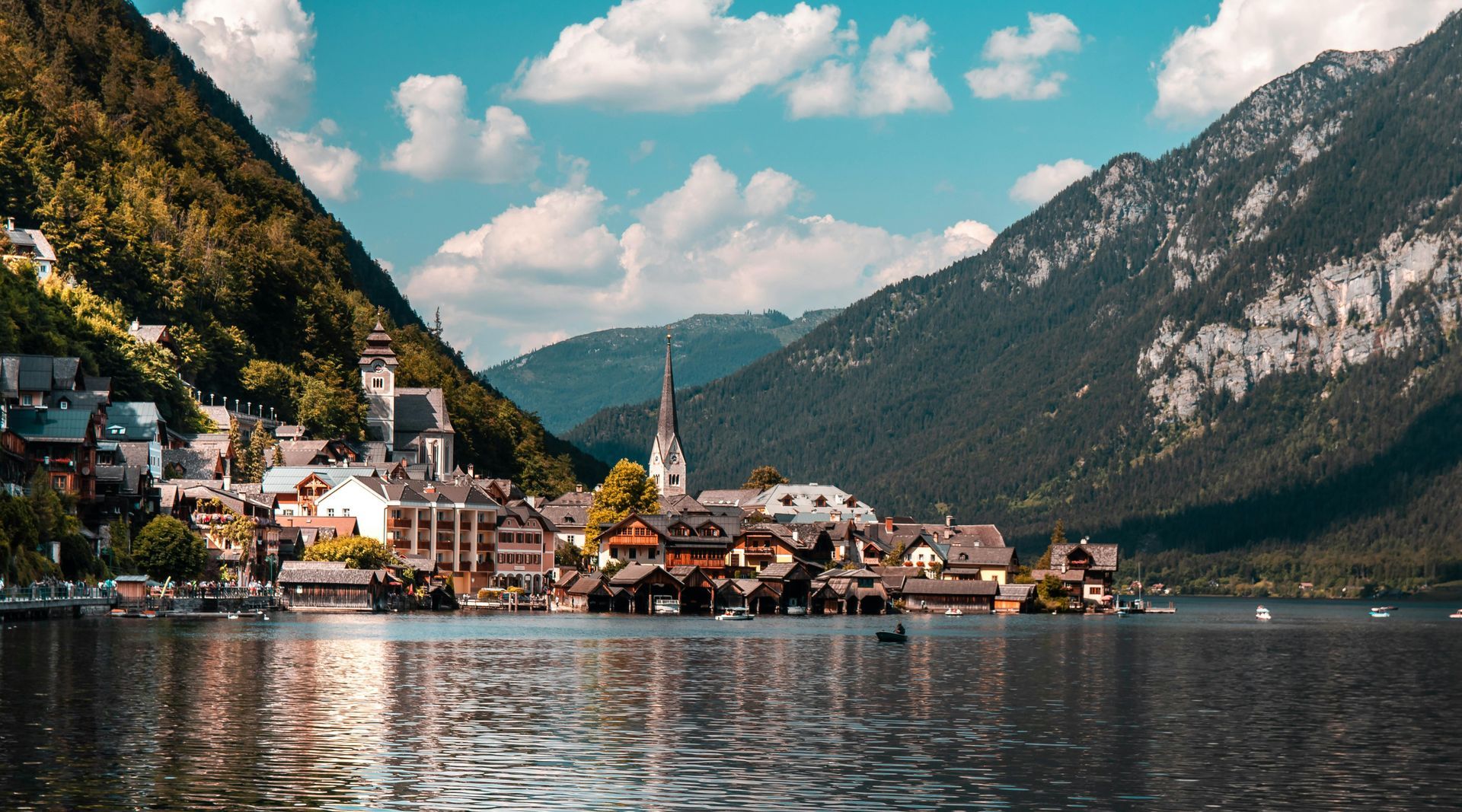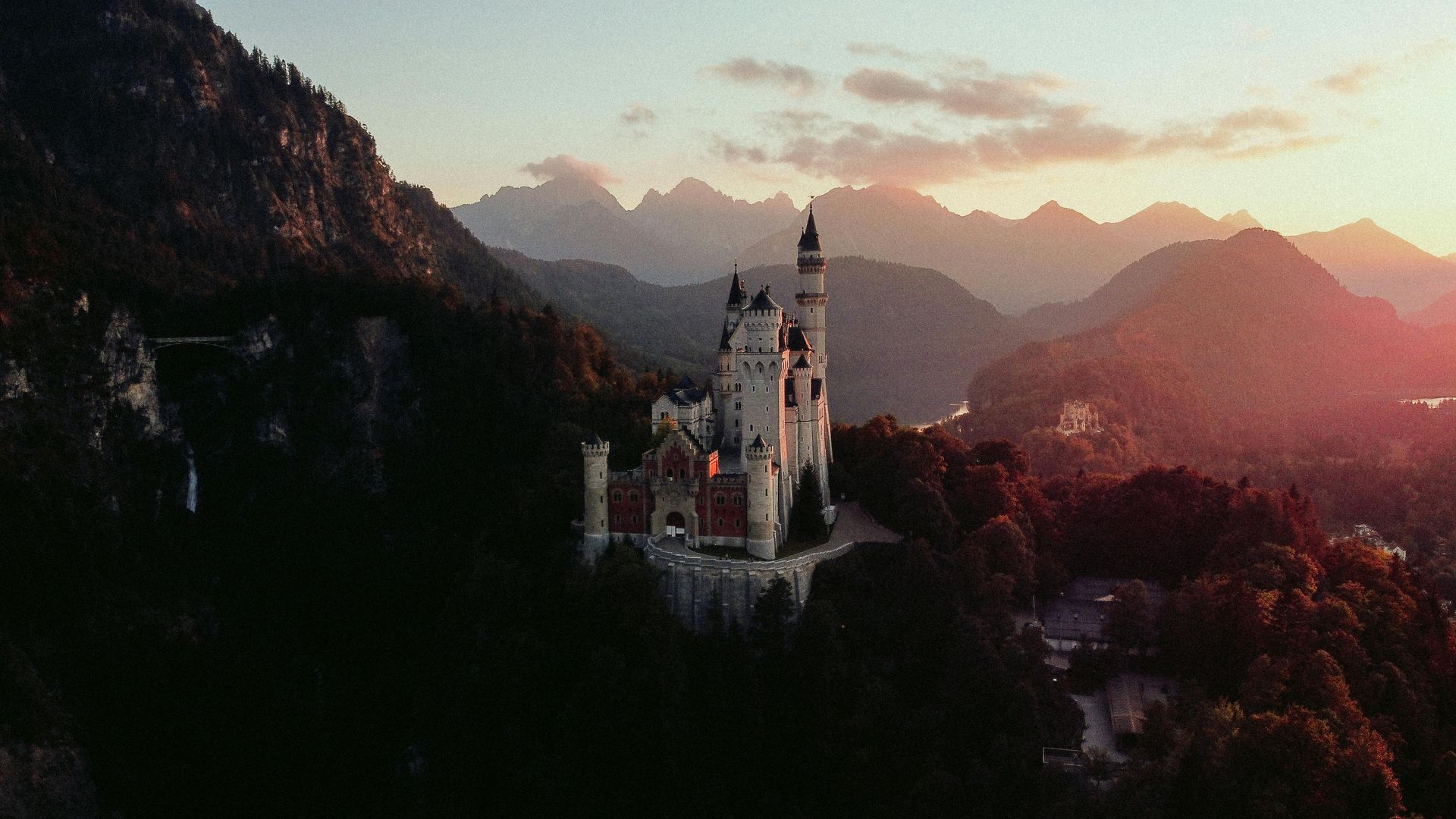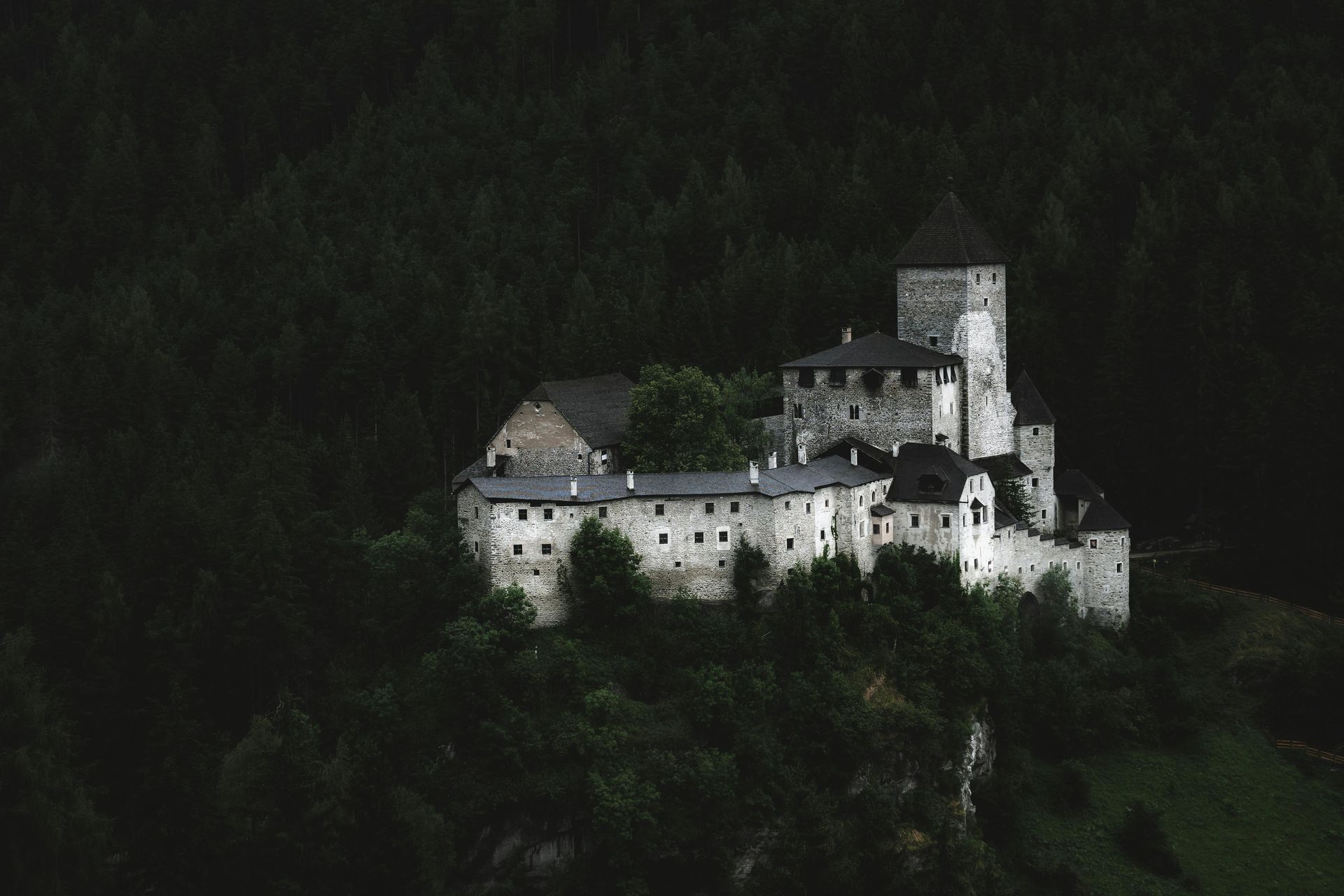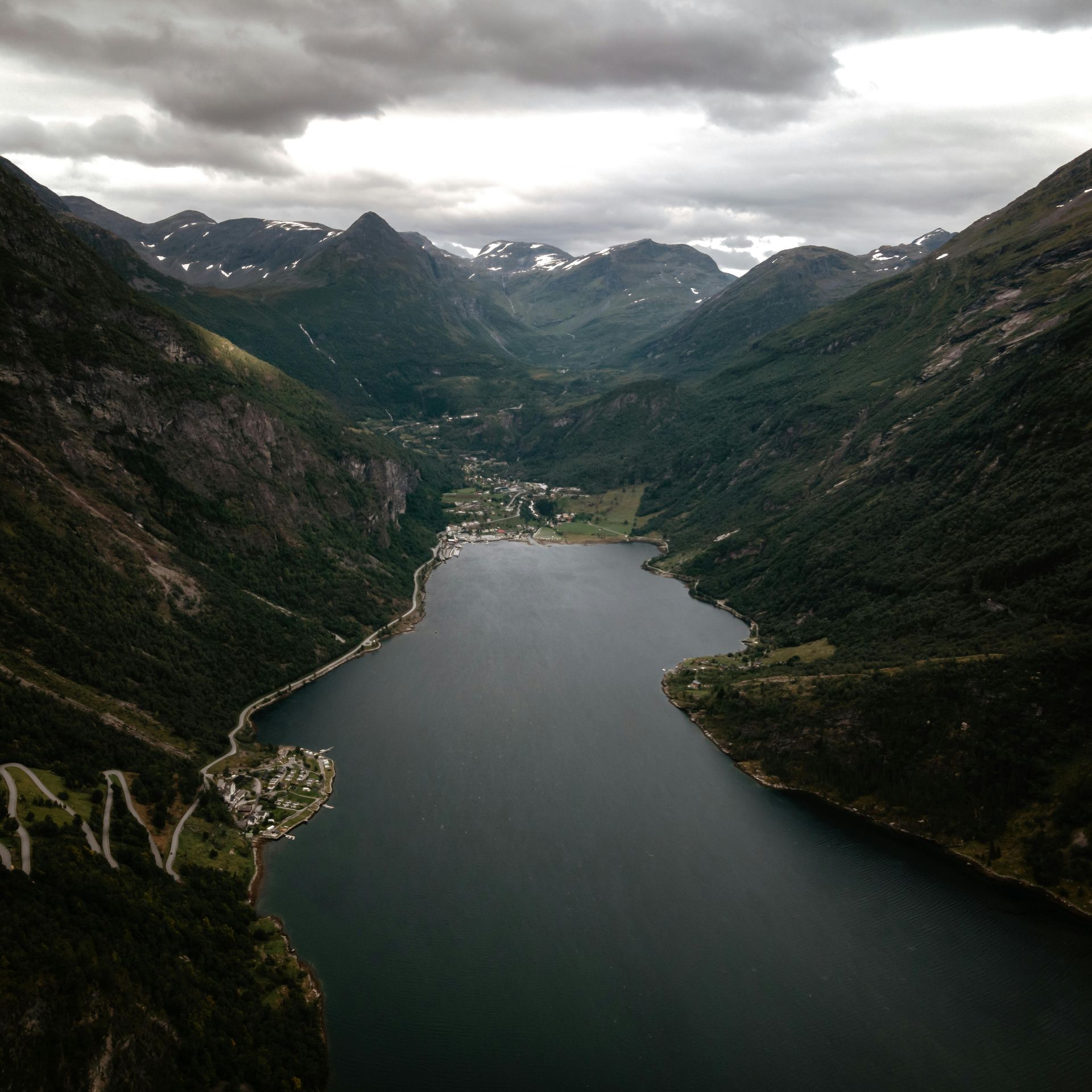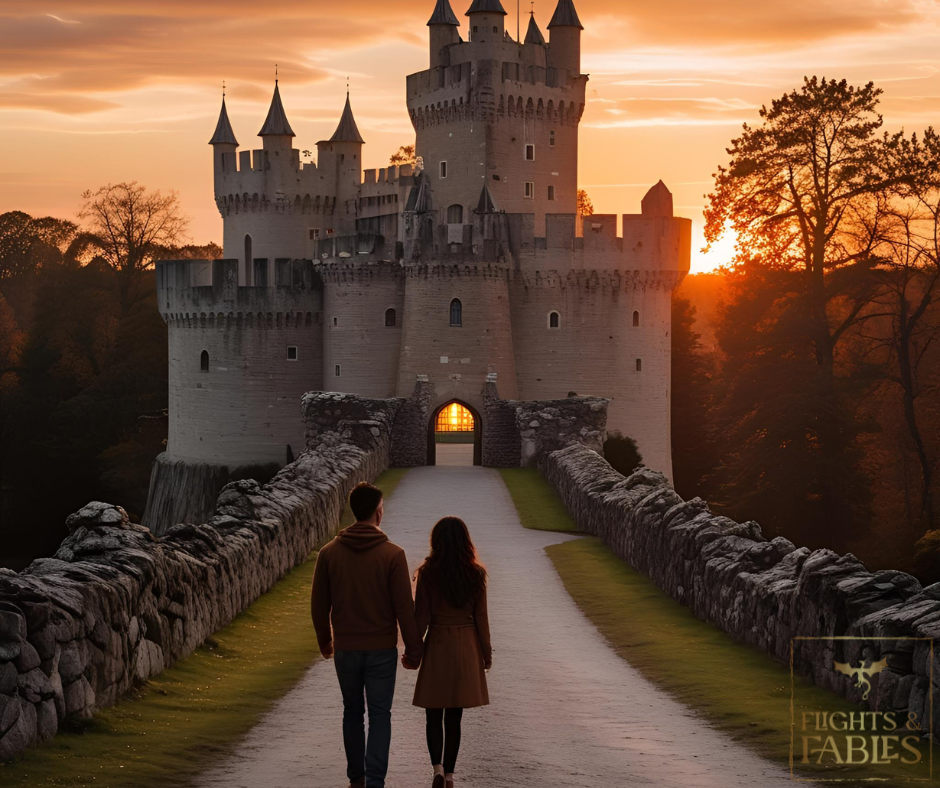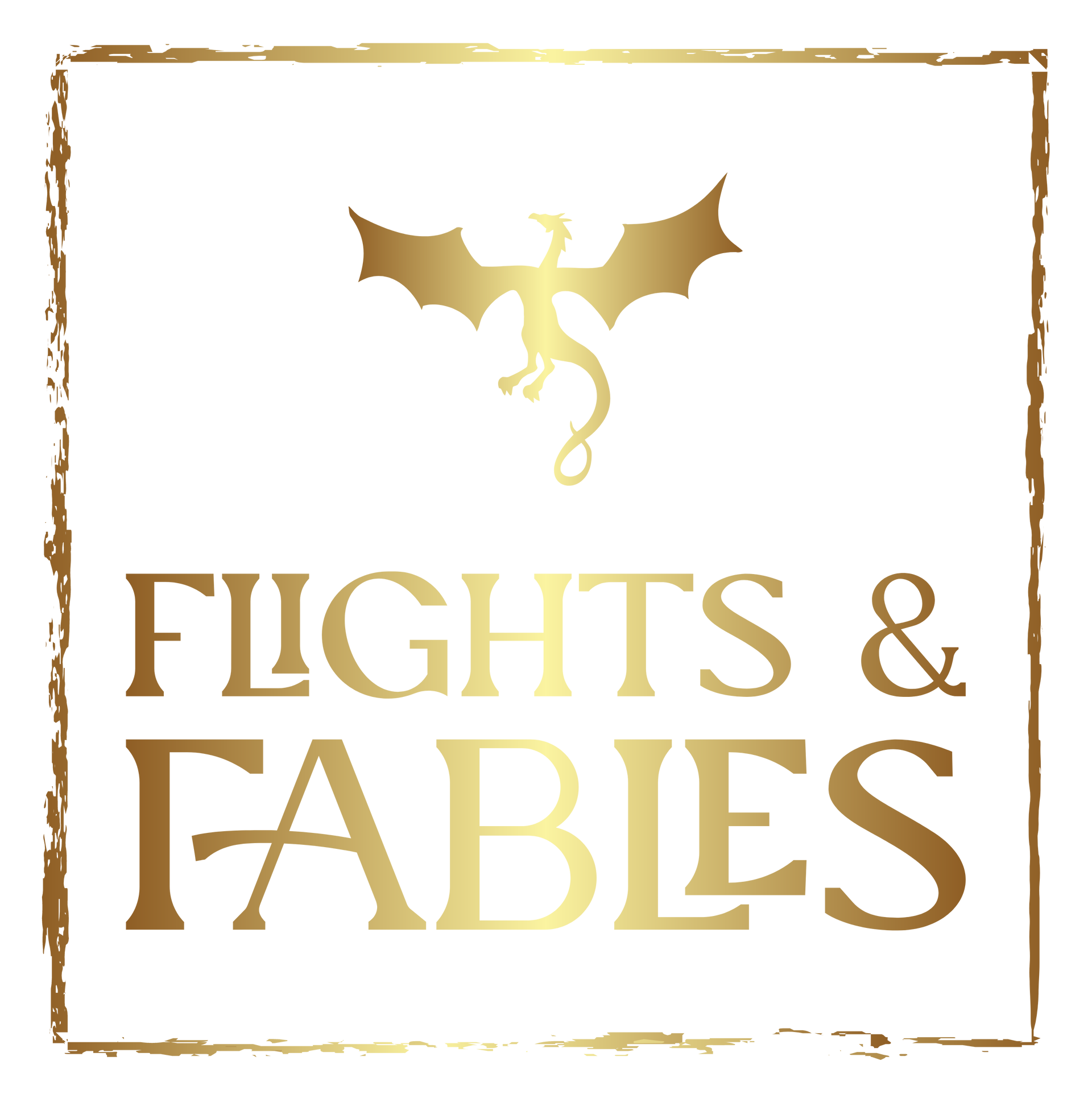From Haunted Halls to Holiday Lights: Where Fantasy Travel Turns Festive
There's a magical moment in European cities when darkness transforms into light, when the year's most haunted destinations shed their Gothic gloom for twinkling festivity. October's ghosts retreat as November's warmth arrives, not the warmth of temperature, but of Glühwein, candlelight, and centuries-old traditions that turn the coldest season into the coziest.
This transformation is uniquely enchanting for fantasy travelers. The same medieval squares that housed witch trials and public executions now host Christmas markets where families sip hot chocolate. The castles that echoed with ghost stories throughout autumn suddenly glow with holiday lights and seasonal celebrations. The cobblestone streets that felt ominous in October's fog now invite evening strolls past artisan stalls and carolers.
These aren't different cities, they're the same places revealing their dual nature. The Gothic architecture that created such atmospheric darkness now provides the perfect backdrop for holiday magic. The medieval history that spawned ghost stories also created the traditions, craftsmanship, and Old World charm that make European Christmas markets feel like stepping into a fairy tale.
For travelers seeking fantasy experiences year-round, this seasonal transformation offers something profound: proof that magic comes in many forms, and the places that excel at darkness often excel equally at light.
Architectural Duality:
Gothic spires and medieval fortresses that create October's haunting atmosphere provide November's perfect stage for festive displays. The same buildings work double duty, atmospheric for Halloween, enchanting for holidays.
Cultural Depth:
Cities with genuine medieval history and authentic ghost stories also preserved genuine Christmas traditions. You're not experiencing invented tourism, you're witnessing centuries-old seasonal transitions that communities have celebrated for generations.
Sensory Richness:
The contrast amplifies both experiences. October's gothic chill makes November's warmth more welcoming. Haunted autumn tours make December's festive markets feel even more magical. The juxtaposition deepens both moods.
Extended Season:
Instead of visiting once, you can experience the same destination twice in utterly different ways. Prague in October versus December offers essentially two different cities occupying the same space.
Fantasy Versatility:
These destinations prove that fantasy travel isn't monolithic. The same medieval world that produces dark legends also creates cozy winter magic. It's Grimm's Fairy Tales, both the dark forest scenes and the gingerbread houses.
Now, let's explore five European cities that master this haunted-to-festive transformation.
Prague: From Alchemist's Lair to Winter Wonderland
Region:
Czech Republic, Central Europe
Fantasy Transformation:
Gothic mystery → Baroque elegance
Best For:
Architectural lovers, medieval history enthusiasts, Christmas market connoisseurs
Magic Level: ⚔️⚔️⚔️⚔️⚔️
The Dark Season (October-Early November)
Prague in autumn embraces its Gothic soul. The city's medieval core, the best-preserved in Europe, takes on genuinely eerie qualities as fog rolls off the Vltava River and early darkness descends. This is the city of alchemists, astronomers, and legends that blur history and myth.
The Prague Castle complex, including the Gothic St. Vitus Cathedral, looms over the city with commanding presence. The narrow lanes of Malá Strana (Lesser Town) twist and turn, creating the labyrinthine feel of a city built for secrecy. The Old Town's astronomical clock, installed in 1410, displays its procession of apostles to crowds who gather to watch this medieval mechanism that has measured time for over 600 years.
Prague's connection to dark history runs deep. The city was Emperor Rudolf II's seat, where he gathered alchemists attempting to create gold and the philosopher's stone. The Golden Lane in Prague Castle housed these alchemists (and later, Franz Kafka). The Old Jewish Quarter preserves synagogues and the ancient cemetery where the legend of the Golem—the clay creature brought to life to protect Prague's Jews, originated.
Haunted castles surround the city, including Houska Castle (built to seal a gateway to Hell) within day-trip distance. Ghost tours wind through the Old Town, sharing tales of headless templars, the White Lady of Rožmberk, and the iron maiden of Prague Castle.
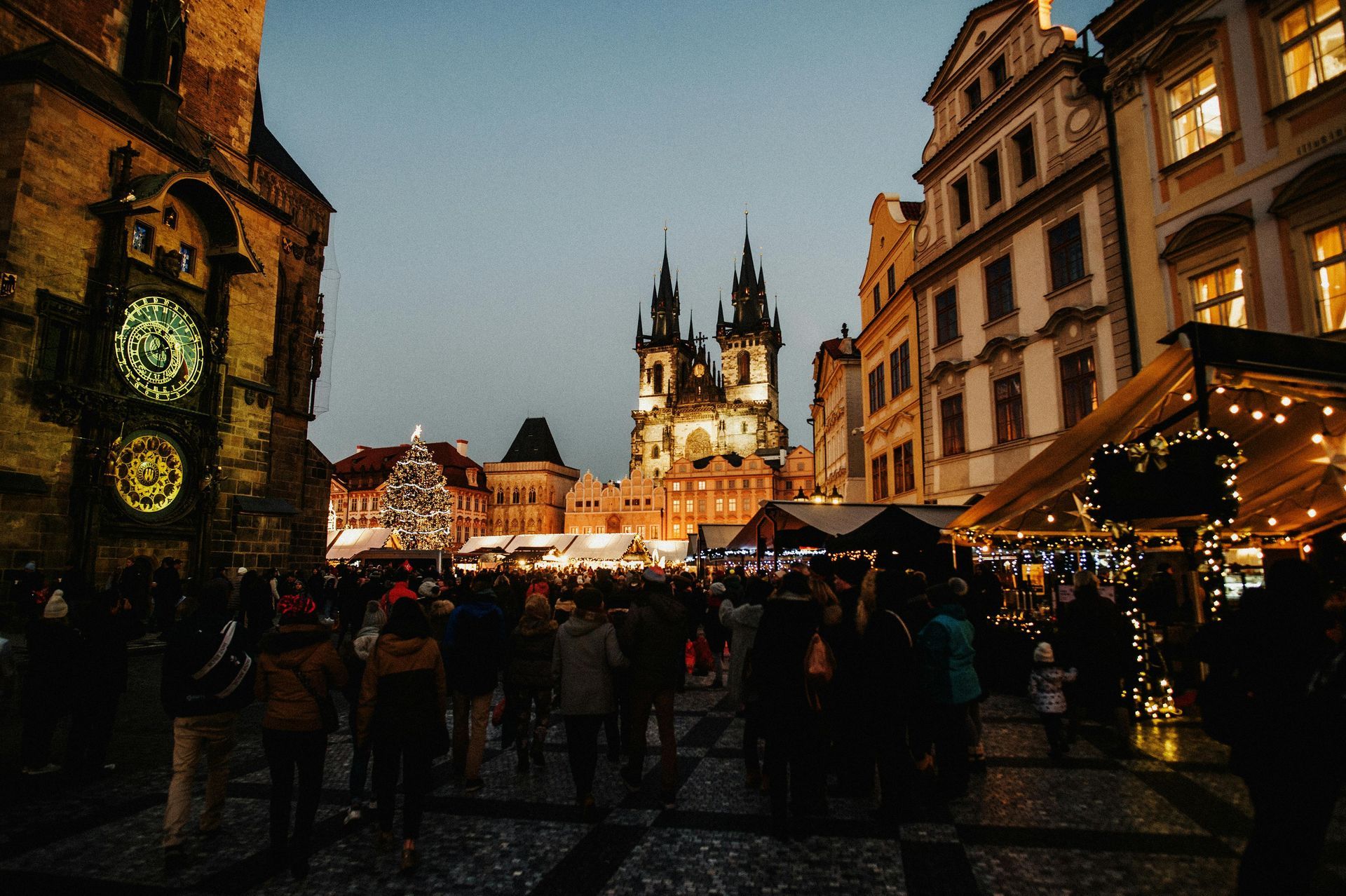
The Festive Transformation (Late November-December)
Then, seemingly overnight, Prague transforms. The same Gothic squares that felt ominous in October now sparkle with Christmas markets that rank among Europe's finest. The Old Town Square, dominated by the Church of Our Lady before Týn's Gothic spires, hosts the city's largest Christmas market, transforming into a wonderland of wooden stalls, enormous Christmas tree, and the scent of trdelník (traditional Czech chimney cake).
Explore Prague's official Christmas market information for current dates and locations.
The astronomical clock that seemed slightly sinister in autumn now watches over festive crowds sipping svařák (Czech mulled wine). The Charles Bridge, atmospheric and moody in October, becomes a promenade past illuminated baroque statues with castle views that look like they belong on Christmas cards. The narrow medieval lanes that created October's labyrinthine unease now invite exploration past shop windows displaying handcrafted ornaments, marionettes, and Bohemian crystal.
Wenceslas Square hosts another major market, while smaller markets appear in Lesser Town Square and other neighborhoods. Each offers regional specialties: klobása (grilled sausages), smažený sýr (fried cheese), medovina (honey wine), and those irresistible trdelník pastries rolled in cinnamon sugar.
Prague's Christmas markets maintain authentic Czech character despite tourism. Many stalls sell genuine local crafts, hand-painted Easter eggs (yes, sold at Christmas), wooden toys, Bohemian glass ornaments, alongside imported goods. The markets reflect Czech traditions rather than generic Christmas commercialism.
Why Fantasy Travelers Love Prague's Transformation
Prague delivers both sides of the fantasy coin with equal authenticity. The Gothic architecture that makes it one of Europe's most atmospheric cities in autumn provides perfect backdrop for winter magic. Unlike cities where Christmas markets feel tacked onto modern infrastructure, Prague's markets occupy medieval squares they were designed for centuries ago.
The city's affordability (compared to Western Europe) allows you to experience both seasons without breaking the budget. Its compact Old Town means you can walk between experiences, castle to market to haunted site to cozy pub, all within manageable distances.
Travel Tips
- Optimal timing: Visit late October for ghost tours and autumn atmosphere, then return late November-December for markets
- Market dates: Prague Christmas markets typically run late November through early January
- Crowd strategy: Early December weekdays offer better market experiences than peak holiday weekends
- Essential experiences: Charles Bridge at dawn (virtually empty), Old Town Square at dusk (markets lighting up), Prague Castle night tours
- Local specialties: Try svařák instead of just Glühwein, sample proper Czech goulash, visit a traditional pub like U Fleků (brewing since 1499)
Pro tip: Book accommodations in the Old Town (Staré Město) or Lesser Town (Malá Strana) for walkable access to both Gothic sites and Christmas markets. Hotels in these areas cost more but eliminate transportation hassles.
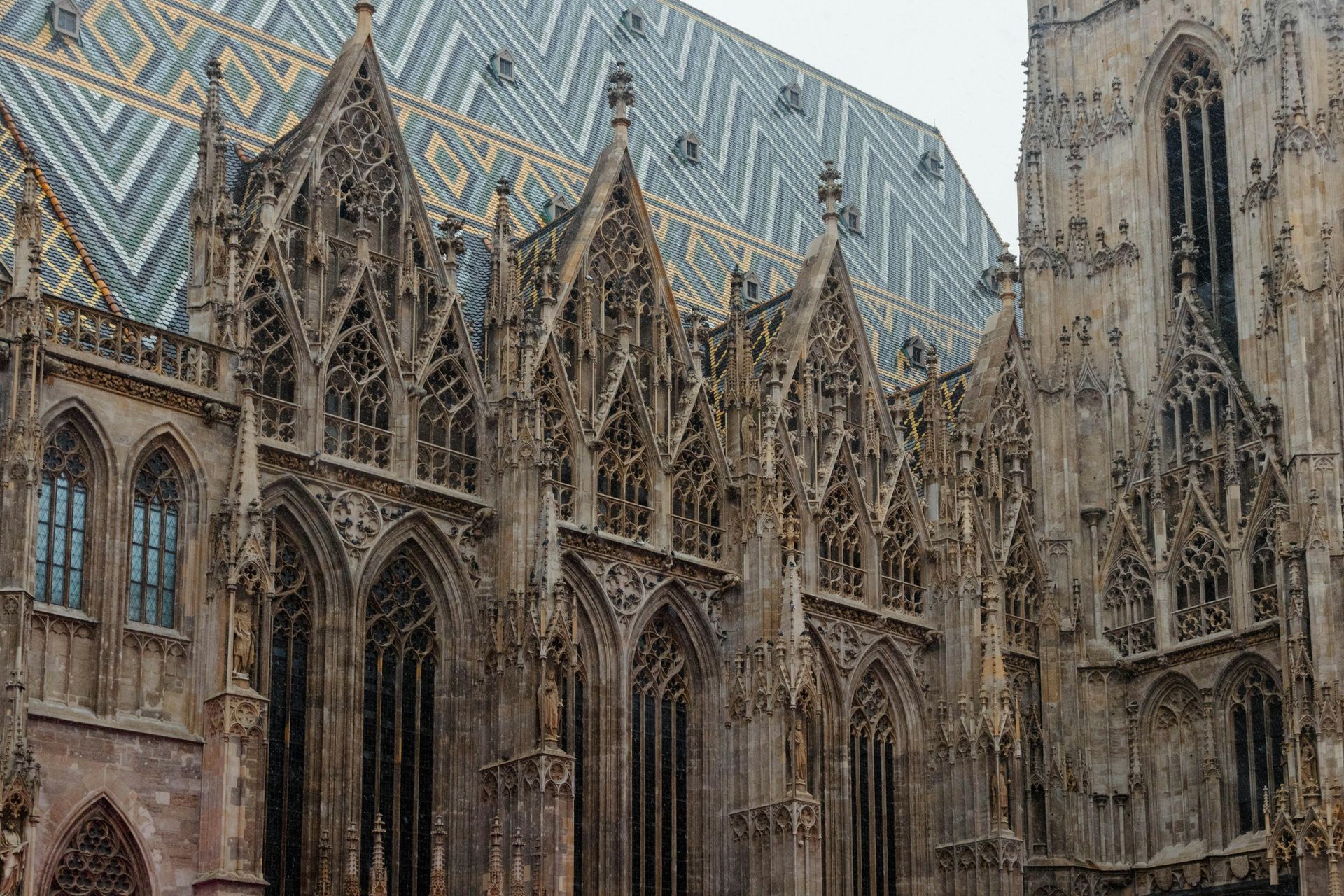
Vienna: Imperial Elegance from Shadows to Sparkle
Region:
Austria, Central Europe
Fantasy Transformation:
Imperial mystery → Royal celebration
Best For:
Music lovers, palace enthusiasts, luxury travelers
Magic Level: ⚔️⚔️⚔️⚔️⚔️
The Dark Season (October-Early November)
Vienna's imperial grandeur takes on Gothic overtones in autumn. The Habsburgs' vast palaces, Schönbrunn, Hofburg, Belvedere, seem to hold secrets in their endless corridors. The city's musical heritage connects to darker stories: Mozart's mysterious death and unmarked grave, Beethoven's deafness and isolation, the tragedy-haunted life of Empress Elisabeth (Sisi).
The city's cemetery culture is unique in Europe. Zentralfriedhof (Central Cemetery) is among the world's largest, where Beethoven, Brahms, Schubert, Strauss, and other cultural giants rest in elaborate tombs. It's a park-like space where Viennese walk, bringing the dead into conversation with the living in ways that feel distinctly Austrian.
October brings Halloween celebrations to Prater amusement park (home to the famous Giant Ferris Wheel featured in "The Third Man"), where horror mazes and haunted attractions run through the month. The Vienna Woods surrounding the city feel appropriately mysterious, these are the forests of Grimm's darker fairy tales.
St. Stephen's Cathedral, Vienna's Gothic masterpiece, houses the catacombs where 11,000 bodies rest in baroque-era ossuaries. Tours through these crypts, including the Habsburg Crypt where emperors and empresses lie in elaborate sarcophagi, emphasize Vienna's comfort with death as part of life, a very Central European approach.

The Festive Transformation (Late November-December)
Vienna's transformation rivals any in Europe. The city hosts not one Christmas market but dozens, each with distinct character. The Rathausplatz (City Hall Square) market spreads before the neo-Gothic Rathaus building, illuminated in spectacular fashion. Over 150 stalls offer Austrian crafts, foods, and the city's famous Christmas punch variations.
The Schönbrunn Palace market might be Europe's most elegant Christmas market. Set in front of the Habsburgs' summer palace (the Austrian Versailles), it combines imperial grandeur with authentic traditions. The palace itself offers special Christmas concerts in the Orangery, where Mozart once performed.
Visit Wien.info for comprehensive Vienna Christmas market details including dates, locations, and special events.
Smaller markets add variety: the Spittelberg market in the 7th district emphasizes arts and crafts in an intimate neighborhood setting. The Karlsplatz market sits before the baroque Karlskirche. The Belvedere Palace market offers stunning views and palace Christmas lights.
Vienna's café culture reaches peak coziness in winter. Historic coffeehouses, Café Central (where Freud, Trotsky, and other intellectuals gathered), Café Sacher (home of the original Sachertorte), Demel (imperial court baker), provide refuges where you can spend hours with Melange (Viennese coffee) and apple strudel, watching winter life pass by windows.
The Vienna Philharmonic and State Opera House offer world-class performances throughout December. Attending a performance in these gilded halls, surrounded by Habsburg-era opulence, ranks among Europe's most elegant holiday experiences.
Why Fantasy Travelers Love Vienna's Transformation
Vienna offers refined fantasy, the imperial elegance of fairy tale kingdoms made real. The transformation from autumn's mysterious palaces to winter's sparkling celebrations feels natural because the Habsburgs celebrated both. Court intrigue and courtly splendor occupied the same spaces.
The city's cultural depth means there's substance beneath the pretty surface. You're not just visiting markets, you're experiencing traditions that emperors established, hearing music in halls where composers premiered symphonies, drinking coffee in spaces where great minds met.
Travel Tips
- Optimal timing: Late November for market opening week (less crowded) or first two weeks of December for full atmosphere
- Concert planning: Book Vienna Philharmonic, State Opera, or palace concerts months ahead for December dates
- Museum considerations: Many museums have extended hours during market season; Vienna Museum Pass offers value for multiple visits
- Transportation: Vienna's excellent public transport (U-Bahn, trams) makes market-hopping efficient; consider Vienna Card for unlimited transport plus discounts
- Essential experiences: Schönbrunn Palace market and palace tour, traditional coffeehouse afternoon, St. Stephen's Cathedral catacombs
Pro tip: Stay near Stephansplatz (St. Stephen's Square) for central access to everything. From here, you can walk to major markets, coffeehouses, and cultural sites. The U-Bahn connection allows easy reach of Schönbrunn and other outer attractions.
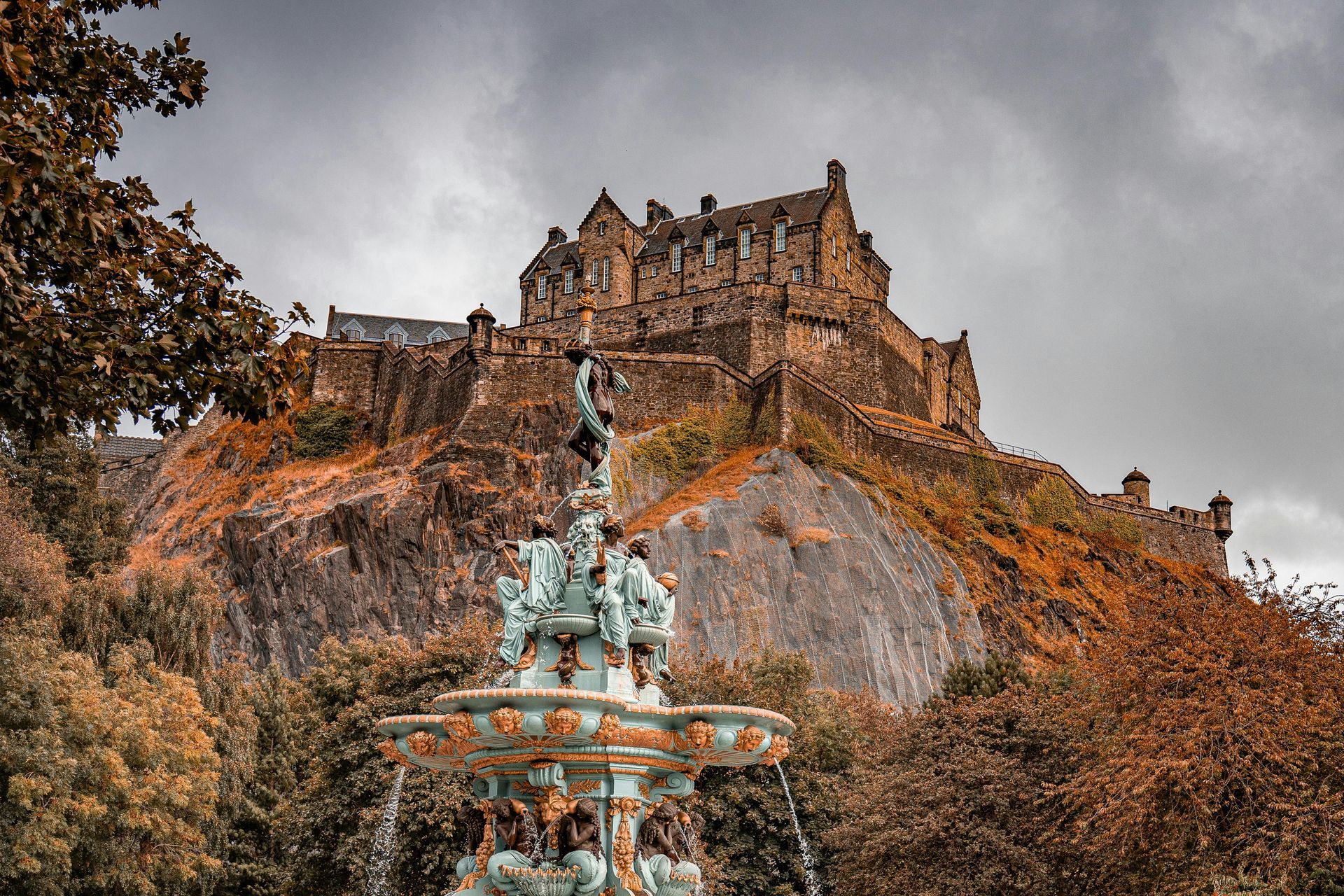
Edinburgh: Celtic Darkness Meets Hogmanay Magic
Region:
Scotland, United Kingdom
Fantasy Transformation:
Highland mystery → Celtic celebration
Best For:
Literary travelers, whisky enthusiasts, castle lovers
Magic Level: ⚔️⚔️⚔️⚔️⚔️
The Dark Season (October-Early November)
Edinburgh in autumn might be Britain's most atmospheric city. Built on volcanic rock, divided between the medieval Old Town and Georgian New Town, wrapped in frequent mist, the Scottish capital embodies Gothic literature come to life. This is the city that inspired Jekyll and Hyde, the city of bodysnatchers Burke and Hare, where the line between respectable society and dark underworld was always thin.
Edinburgh Castle, perched on its volcanic plug, dominates the skyline with medieval authority. The castle's documented hauntings include the Headless Drummer, the spectral piper, and Lady Janet Douglas. October brings ghost tours through the castle vaults and the Blair Street Underground Vaults, former slum dwellings beneath the city where guides share genuinely unsettling stories.
The Royal Mile, connecting castle to palace, becomes atmospheric tunnel during autumn's early darkness. Close (narrow alleyways) branch off into shadowy depths. The Grassmarket, where public executions once entertained crowds, maintains its medieval street plan. Greyfriars Kirkyard, with weathered tombstones and the story of Greyfriars Bobby (the loyal dog who guarded his master's grave), epitomizes Edinburgh's comfort with death as part of city identity.
Arthur's Seat, Edinburgh's other volcanic peak, looms over the city as a proper wilderness hill within urban bounds. Climbing it in autumn wind and mist feels like ascending into Celtic legend, appropriate, as this likely was a sacred site in pre-Christian Scotland.
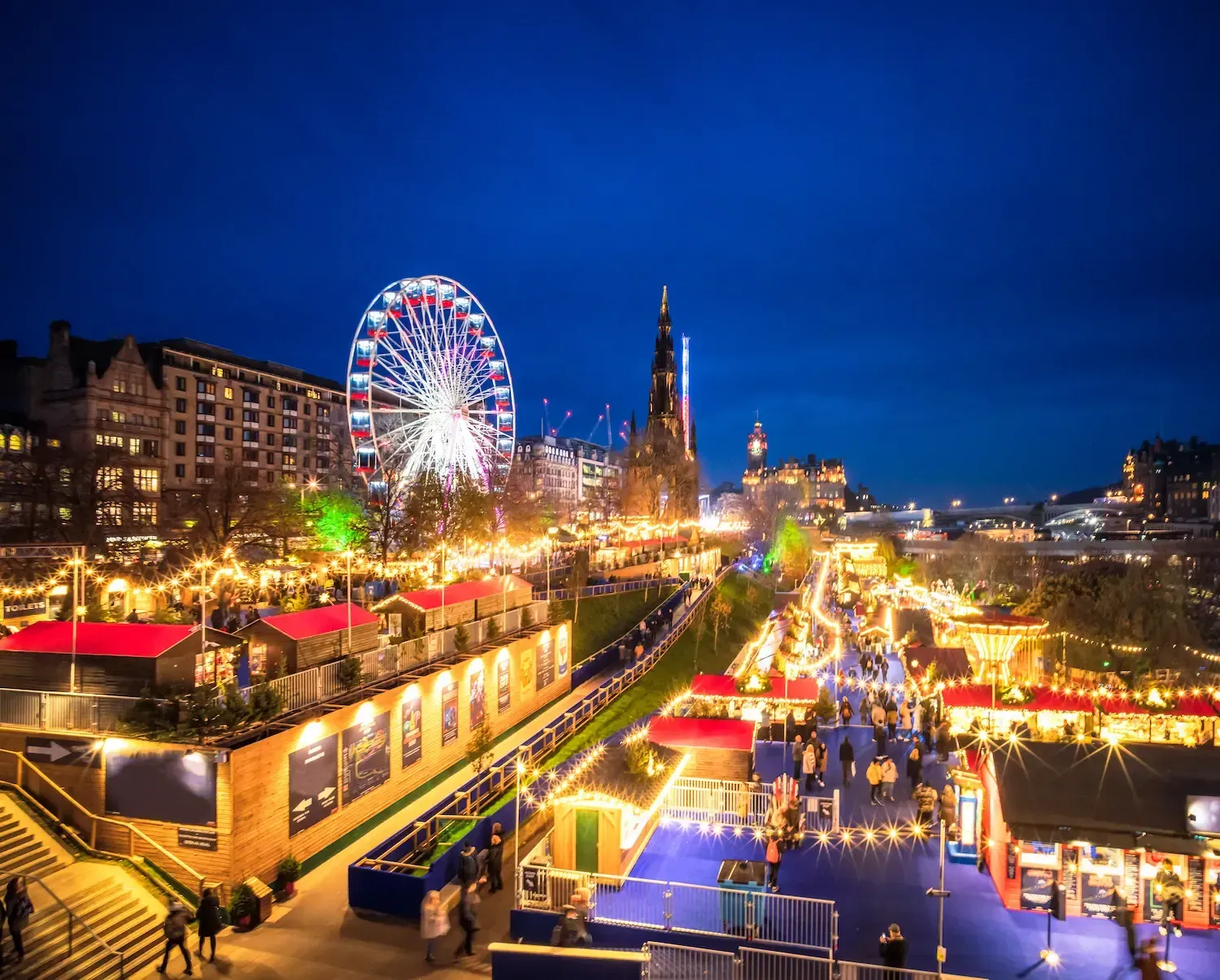
The Festive Transformation (Late November-December)
Edinburgh's winter transformation is gradual but profound. The city doesn't immediately shift from Gothic to cozy, instead, it layers festivity over darkness, creating something uniquely Scottish.
The Edinburgh Christmas market fills Princes Street Gardens, the long park separating Old and New Towns. The castle provides a dramatic backdrop for the market's Ferris wheel, carousel, and wooden stalls. Scottish specialties include tablet (fudge-like confection), cranachan (traditional dessert), and of course, whisky in numerous variations.
What makes Edinburgh's holiday season special is Hogmanay, Scotland's New Year celebration. Edinburgh's Hogmanay is among the world's largest New Year's festivals, with street parties, torchlight processions, and traditions dating to pre-Christian winter solstice celebrations. The Scots take winter seriously, longer, darker, harsher than England's, and celebrate its turning with appropriate intensity.
The city's Christmas markets (late November-early January) overlaps with Hogmanay preparations (December 30-January 1), creating extended festivity. The city maintains Scottish character rather than generic Christmas theming, you'll hear bagpipes alongside carols, taste haggis alongside bratwurst, and experience traditions that feel authentically Edinburgh rather than imported.
Learn more about Edinburgh's Christmas and Hogmanay celebrations through Edinburgh's official tourism site.
The city's literary heritage shines in winter. Cozy pubs with peat fires, bookshops along the Royal Mile, and the Writers' Museum (dedicated to Burns, Scott, and Stevenson) provide refuge from weather. Many visitors combine holiday festivities with whisky tours to nearby distilleries or day trips to Highland scenery draped in winter snow.
Why Fantasy Travelers Love Edinburgh's Transformation
Edinburgh never fully abandons its Gothic soul, it just adds warmth and light without erasing darkness. The castle remains atmospheric. The closes still feel mysterious. But now you can retreat from the cold into traditional pubs, warm up with whisky, and celebrate Scottish resilience in the face of harsh seasons.
The city's literary and historical depth means there's always another layer to discover. Harry Potter fans pilgrimage to sites that inspired J.K. Rowling (she wrote in Edinburgh). History enthusiasts explore sites from Mary Queen of Scots to the Scottish Enlightenment. The city rewards curiosity year-round.
Travel Tips
- Optimal timing: Early December for Christmas markets with manageable crowds, or December 30-January 1 for Hogmanay (book accommodation many months ahead)
- Hogmanay tickets: Major Hogmanay events require tickets purchased in advance; street party is the main free event
- Weather reality: Edinburgh is cold, windy, and often wet in winter. Dress in warm, waterproof layers with sturdy shoes
- Essential experiences: Edinburgh Castle tour (book ahead), underground vaults tour, whisky tasting, climb Arthur's Seat for views (weather permitting)
- Highland day trips: Consider day trips to Stirling Castle, Loch Lomond, or whisky regions for broader Scottish experience
Pro tip: The Royal Mile is touristy but convenient for accommodations between castle and palace. For more local flavor, stay in Stockbridge or Leith neighborhoods (excellent restaurants, less touristy, good bus/tram connections).
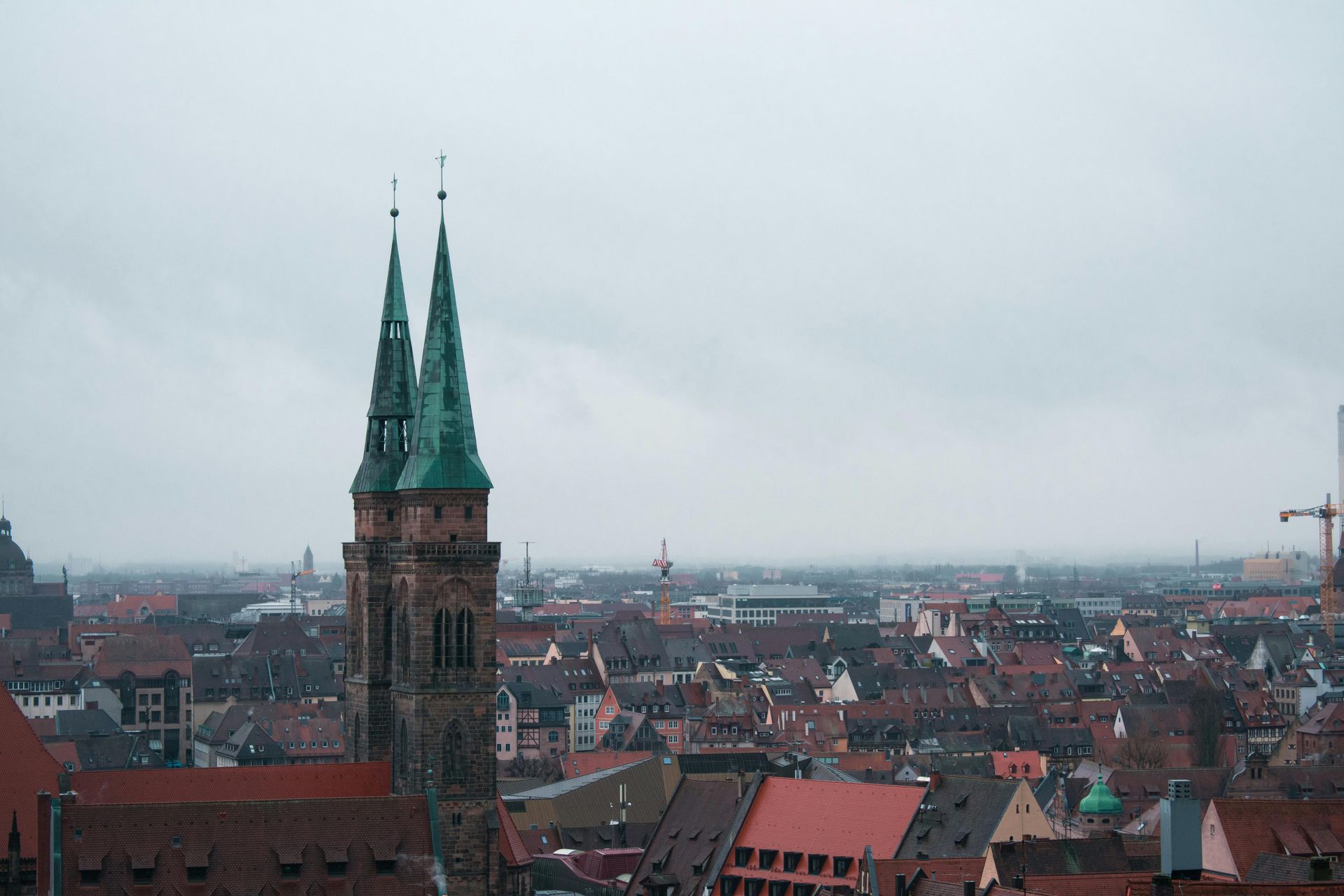
Nuremberg: Medieval Fortifications to Christkindlesmarkt Glory
Region:
Bavaria, Germany
Fantasy Transformation:
Imperial city fortress → Christmas market capital
Best For:
History enthusiasts, authentic German Christmas seekers, medieval architecture lovers
Magic Level: ⚔️⚔️⚔️⚔️⚔️
The Dark Season (October-Early November)
Nuremberg carries heavy historical weight. This was the Holy Roman Empire's unofficial capital for centuries, where emperors held court and imperial regalia were stored. The massive Kaiserburg (Imperial Castle) crowns the Old Town, its medieval fortifications encircling the historic center in concentric rings that still define the city's layout.
Nuremberg's medieval preservation is extensive, the city maintains over 4 kilometers of medieval walls with towers, gates, and walkable ramparts. Walking these walls, especially in autumn's dimming light, provides visceral connection to medieval defensive thinking. The city that felt impregnable behind these walls later became symbolic of darker 20th-century history.
The city's dark 20th-century legacy remains visible. Nuremberg was Hitler's chosen city for Nazi party rallies, and the Documentation Center Nazi Party Rally Grounds preserves and contextualizes this history without glorifying it. The city later hosted the Nuremberg Trials where Nazi leadership faced justice. This duality, medieval imperial glory and 20th-century infamy, creates complexity that autumn's mood reflects.
St. Lorenz and St. Sebaldus churches represent Gothic achievement. The Schöner Brunnen (Beautiful Fountain) in the Hauptmarkt (Main Market Square) is a 19-meter Gothic spire of carved stone. The Dürer House preserves the home of Albrecht Dürer, the Renaissance artist whose work captured both light and shadow of his era.
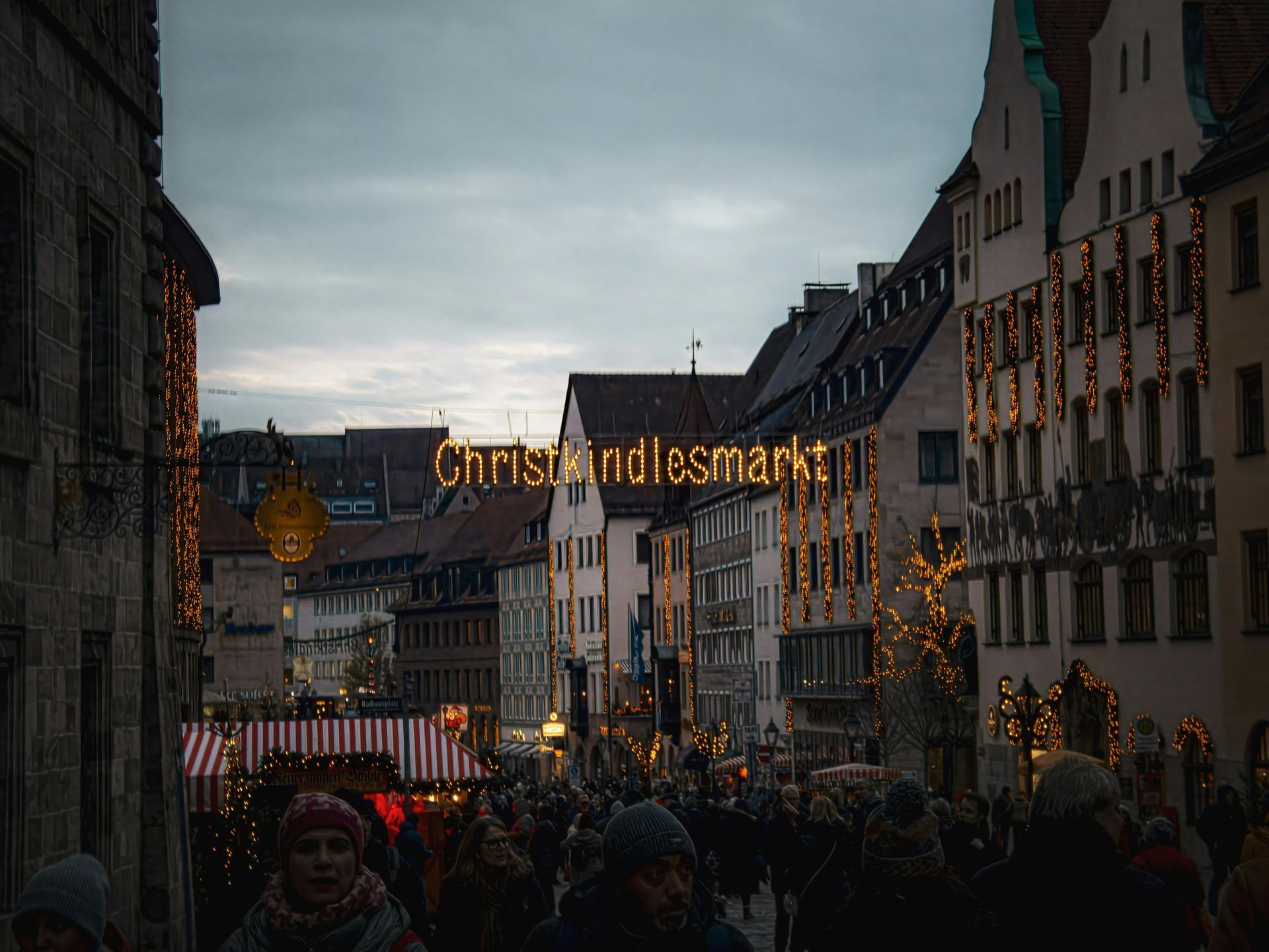
The Festive Transformation (Late November-December)
Then comes transformation. The Hauptmarkt, where the Gothic fountain stands, becomes home to the Christkindlesmarkt, Germany's most famous Christmas market. For four weeks before Christmas, this market embodies German Christmas tradition in its purest form.
The Christkindlesmarkt dates to 1628, making it one of Germany's oldest markets. It maintains strict standards for vendors, only traditional crafts and foods are permitted, no generic imported goods. The Nürnberger Bratwurst (small grilled sausages, three to a roll), Lebkuchen (gingerbread, a Nuremberg specialty for centuries), and Glühwein served in collectible mugs represent authentic regional tradition.
The market's prologue, an opening ceremony featuring the Christkind (a young woman chosen biennially to represent the Christmas angel), draws enormous crowds. The Christkind recites the prologue from the Frauenkirche balcony, officially opening the market season. Visit the official Christkindlesmarkt website for exact dates and tradition details.
Over 180 stalls fill the market with handcrafted ornaments, toys, nutcrackers, and decorations. The quality control means you're buying genuine craftsmanship—hand-carved wooden figures, hand-blown glass ornaments, hand-decorated gingerbread. The market represents what German Christmas markets were before tourism diluted many into generic shopping opportunities.
The Children's Christmas Market (Kinder Weihnachten) on Hans-Sachs-Platz offers dedicated space for families with carousel, miniature train, and child-focused activities. The market at the Kaiserburg brings Christmas to the castle with views over the illuminated Old Town.
Why Fantasy Travelers Love Nuremberg's Transformation
Nuremberg delivers the most authentic German Christmas market experience at scale. While smaller towns may feel more intimate, Nuremberg combines size, quality, tradition, and atmosphere in proportions that justify its reputation. This is where German Christmas market tradition is preserved most carefully.
The city's compactness, the entire Old Town is walkable, means you can experience medieval architecture, castle views, market atmosphere, and traditional restaurants all within manageable exploration. The city works hard to address its dark history while celebrating its medieval glory, creating a complexity that makes it more interesting than simple fairy tale towns.
Travel Tips
- Optimal timing: Opening weekend (late November) for prologue ceremony, or first two weeks of December for atmosphere without peak crowds
- Accommodation strategy: Book 6-12 months ahead for market season; prices increase and availability disappears
- Essential purchases: Nürnberger Lebkuchen (buy from traditional bakers like Schmidt or Wicklein), hand-carved ornaments, market mug
- Beyond the market: Walk the city walls, visit the castle, explore the Germanisches Nationalmuseum (German National Museum)
- Franconian food: Try Schäufele (roasted pork shoulder), Sauerbraten (marinated beef roast), and Franconian wine or beer
Pro tip: Stay inside the Old Town walls (expensive but worth it) for walking access to everything. Hotel Elch and Hotel Drei Raben offer character and central location. Budget travelers can find value in neighborhoods like Gostenhof or Eberhard Hopf with good tram connections.

Cologne: From Medieval Shadows to Cologne Cathedral Christmas
Region: North Rhine-Westphalia, Germany
Fantasy Transformation: Medieval trade city → German Christmas tradition
Best For: Cathedral enthusiasts, German Christmas market lovers, Rhine River cruise passengers
Magic Level: ⚔️⚔️⚔️⚔️
The Dark Season (October-Early November)
Cologne's massive Gothic cathedral dominates the city, literally. At 157 meters tall, it's Germany's most visited landmark and took over 600 years to complete. In autumn, when fog rises from the Rhine and daylight fades early, this architectural monster creates an overwhelming presence. The cathedral's twin spires loom over the surrounding city, visible from almost everywhere, reminding you that medieval builders created structures meant to inspire awe that borders on fear.
The cathedral's treasury houses relics including the Shrine of the Three Kings, said to contain the bones of the Three Wise Men. Whether authentic or not, the golden reliquary represents medieval Christianity's power and the thin line between sacred and macabre that characterized the period.
Cologne's Old Town (Altstadt) preserves medieval street plans despite heavy WWII damage and reconstruction. The narrow lanes near Gross St. Martin church and around the Fischmarkt (Fish Market) maintain atmospheric qualities, especially as evening darkness arrives. The city's Roman heritage shows through as well, Cologne was founded as a Roman colony, and fragments of Roman walls appear throughout the modern city.
The Rhine riverfront takes on Gothic qualities in autumn, the river that's been highway and boundary for millennia, the subject of countless legends and the inspiration for Wagner's Ring cycle. Walking the river promenade as darkness falls, with the cathedral silhouetted against twilight sky, you understand why the Rhine generated so many myths.

The Festive Transformation (Late November-December)
Cologne's transformation is dramatic because the scale is enormous. The city doesn't host one Christmas market, it hosts several major markets, including what many consider Germany's finest.
The Cathedral Christmas Market spreads around the Dom (cathedral), with over 160 stalls in the shadow of Gothic spires. The juxtaposition of the massive medieval cathedral and the warm, human-scale market creates powerful contrast. The cathedral's illuminated facade provides backdrop for the market's lights, creating scenes that exemplify German Christmas tradition.
Check Cologne's official tourism site for Christmas market maps and event schedules.
The Neumarkt market emphasizes crafts and regional products. The Alter Markt (Old Market) in the heart of the Old Town offers more traditional atmosphere in medieval-scaled squares. The Angel's Christmas Market at Neumarkt brings special enchantment with its angels theme and children's activities.
The Harbour Christmas Market on the Rhine offers unique maritime-themed atmosphere, while markets in the Belgian Quarter provide multicultural perspectives. Cologne's market diversity means you can visit multiple markets with distinct characters, a market-hopping tour reveals different facets of the city.
Cologne's other identity emerges too: Kölsch culture. This is Germany's most liberal, open-hearted city, where the local Kölsch beer flows freely and the city's famous openness (Kölsche Lebensart) welcomes visitors. Traditional brewhouses (Brauhaus) serve Kölsch in small 200ml glasses that servers continuously replace, creating communal atmosphere perfect for warming up between market visits.
Why Fantasy Travelers Love Cologne's Transformation
Cologne offers quintessential German Christmas market experience without the crowds of Munich or Nuremberg. The cathedral provides an anchor, impossible to lose in the city, always drawing you back, while the market variety prevents monotony.
The city's position on the Rhine makes it popular for river cruise passengers, and indeed, experiencing Cologne as part of a Rhine River cruise during Christmas market season combines multiple fantasy elements: castles along the Rhine, multiple German cities' markets, and the romance of river travel in winter.
Travel Tips
- Optimal timing: First two weeks of December for full markets without peak crowds; Christmas week is beautiful but very crowded
- Market concentration: Most major markets are walking distance from each other; plan a full day for market-hopping
- Cathedral visit: Climb the 533 steps to the cathedral tower for views over the city and Rhine (closed during some weather conditions)
- Kölsch experience: Visit a traditional Brauhaus (Früh, Gaffel, Peters Brauhaus) for authentic local beer culture
- Rhine cruise connection: Many Rhine cruises include Cologne; Christmas market cruises are especially popular
Pro tip: Stay on the "other side" (right bank) of the Rhine in the Deutz neighborhood for better value accommodations with excellent cathedral views. The Hohenzollern Bridge (famous for its thousands of love locks) connects to the Old Town in a short walk.
Planning Your Haunted-to-Festive Journey
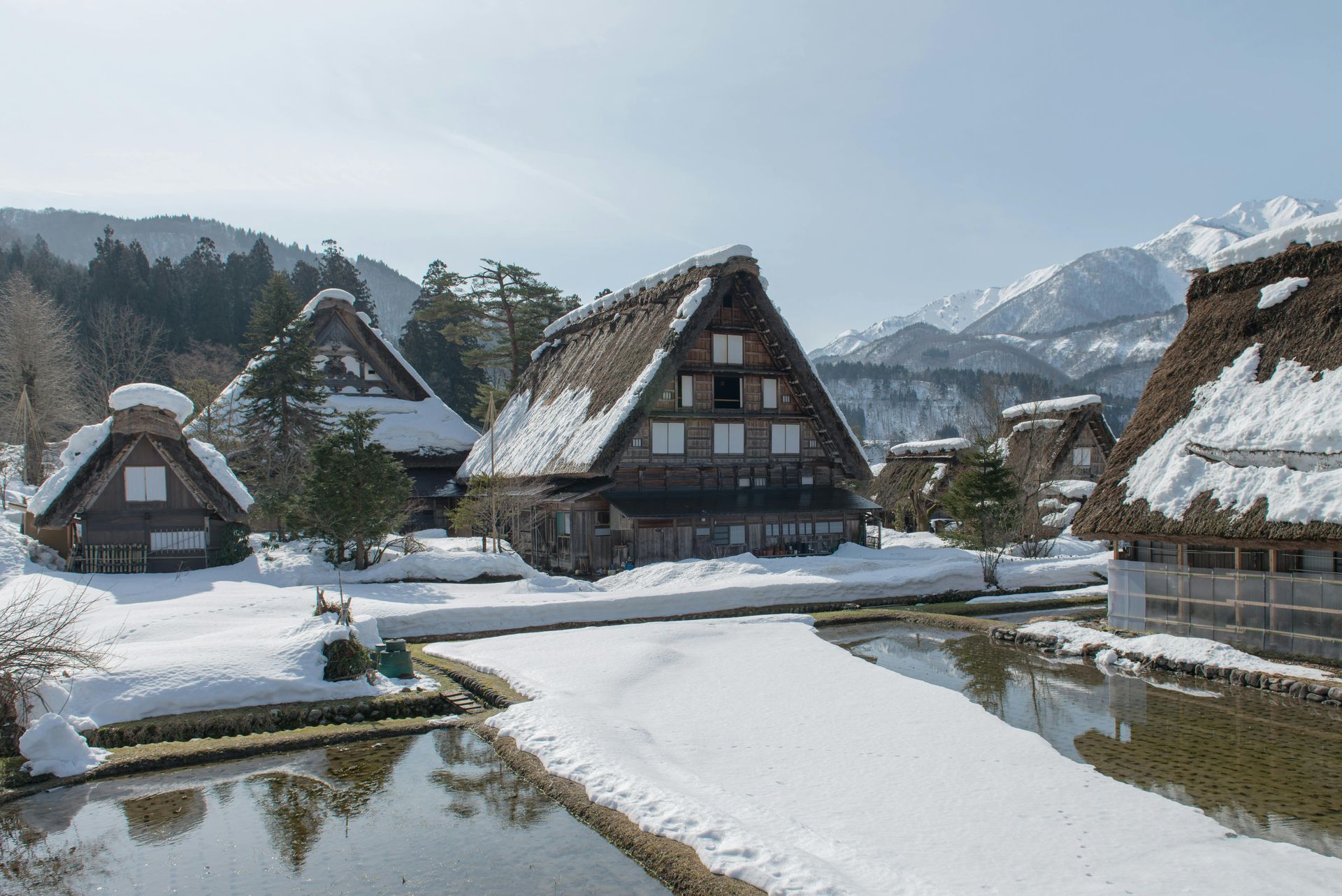
Multi-City Transformation Itineraries
The German Christmas Market Circuit (7-10 days):
- Nuremberg (3 days) for the Christkindlesmarkt
- Munich (2 days) for Bavarian Christmas markets
- Cologne (2 days) for cathedral market and Rhine atmosphere
- Optional extensions: Rothenburg ob der Tauber (fairy tale town), Stuttgart, or Frankfurt markets
Central European Christmas Magic (10-14 days):
- Prague (4 days) for Old Town markets and medieval atmosphere
- Vienna (4 days) for imperial Christmas elegance
- Salzburg (2 days) for Alpine Christmas markets
- Optional: Budapest (3 days) for Central European Christmas traditions
The Rhine Christmas Cruise Experience (7 days):
- Rhine River Christmas Market Cruise stopping at multiple German and French Christmas markets
- Pre-cruise: Amsterdam or Cologne (2 days)
- Post-cruise: Basel or Strasbourg (2 days)
- Perfect for experiencing multiple markets without constant hotel changes
Timing Your Transformation Journey
Late October (Dark Season Peak):
- Best for: Halloween events, ghost tours, autumn atmosphere, lower prices
- Considerations: Christmas markets haven't opened; some attractions have reduced hours
- Perfect if: You want Gothic atmosphere without festivity, or planning a return trip for markets
Early November (Transition Period):
- Best for: Avoiding crowds, lower prices, autumn colors still visible, some early markets opening
- Considerations: Weather can be gray and rainy; full Christmas atmosphere not yet developed
- Perfect if: Budget-conscious travelers who want to experience both seasons with two separate trips
Late November (Market Opening Season):
- Best for: Market openings with less crowding, Christmas atmosphere building, reasonable prices
- Considerations: Markets may not be fully operational opening weekend; weather getting colder
- Perfect if: You want Christmas markets without peak-season crowds and prices
Early-Mid December (Peak Christmas Market Season):
- Best for: Full Christmas atmosphere, all markets operating, festive energy, shorter days enhance lighting
- Considerations: Higher prices, more crowds, need to book well ahead
- Perfect if: You want the complete Christmas market experience and don't mind sharing it
Late December (Christmas Week):
- Best for: Christmas Day and Boxing Day experiences, New Year's preparations, maximum festivity
- Considerations: Many markets close December 24; very high prices; some restaurants/shops close Christmas
- Perfect if: You're combining markets with actual Christmas celebration or Edinburgh's Hogmanay
Practical Considerations for Fantasy Winter Travel
Booking Strategy:
- Accommodation: Book 3-6 months ahead for December dates in popular cities; prices double during market season
- Transportation: European trains are efficient but book ahead for best prices; consider rail passes for multi-city trips
- Christmas markets: No tickets needed for entry; markets are free public events (though you'll spend money inside)
- Special events: Concerts, special dinners, Hogmanay events require advance tickets
What to Pack for Cozy Winter Destinations:
- Layering essentials: Thermal base layers, warm mid-layers, waterproof outer layer with hood
- Footwear: Waterproof boots with good traction for cobblestones and potential ice/snow
- Accessories: Warm hat, gloves, scarf, warm socks (you'll be outdoors for extended market visits)
- Market supplies: Reusable shopping bag for purchases, small backpack for layers as you warm up indoors
- Tech considerations: Portable phone charger (cold drains batteries), waterproof phone case
Budget Expectations:
- Accommodation: $80-200+ per night depending on city and proximity to markets
- Meals: $30-60 per day (mix of market food, casual restaurants, and nicer dinners)
- Market spending: Budget $20-50 daily for food, drinks, and small purchases; more if buying ornaments and crafts
- Transportation: $50-100 for inter-city trains; $10-20 daily for local transport (or walk most places)
- Activities: Many Christmas markets are free; budget for castle entries, tours, museums, concerts
Christmas Market Essentials:
Must-Try Foods:
- Glühwein/Mulled wine: Keep the decorative mug as a souvenir (usually $3-5 deposit, keep the mug)
- Bratwurst/Sausages: Different regions have distinct styles
- Roasted chestnuts: Classic winter street food
- Potato pancakes: Kartoffelpuffer (German) or bramborák (Czech)
- Gingerbread: Lebkuchen (German), perníček (Czech), regional variations
- Regional specialties: Try local versions rather than sticking to familiar foods
Best Souvenirs:
- Hand-crafted ornaments: Look for local artisans, not mass-produced imports
- Wooden toys and nutcrackers: Especially in Nuremberg and German markets
- Glassware: Bohemian glass in Prague, hand-blown ornaments everywhere
- Market mugs: Each city's Glühwein mug has unique design, collect them as travel memories
- Regional crafts: Marionettes in Prague, Austrian textiles, Scottish tartans
- Edible gifts: Lebkuchen tins from Nuremberg, Scottish shortbread, Austrian chocolates
Health & Comfort:
- Pace yourself: Markets can be overwhelming; take breaks in cafés or museums
- Stay hydrated: Easy to forget while drinking Glühwein; alternate with water
- Warm-up spots: Identify warm refuges (cafés, churches, museums) for when cold becomes uncomfortable
- Cobblestone feet: These cities have historic paving; comfortable shoes are essential even if not stylish
- Alcohol awareness: Glühwein is deceptively strong and the cold masks intoxication; pace consumption
Combining Markets with Fantasy Travel Experiences
Castle Connections: Many of Europe's most haunted castles are near these cities:
- From Prague: Day trips to Karlštejn Castle, Konopiště Castle, or overnight to Houska Castle
- From Vienna: Bratislava Castle (Slovakia), Melk Abbey, or the Wachau Valley castles
- From Edinburgh: Stirling Castle, Balmoral, or overnight to Highlands castles
- From Nuremberg: Rothenburg ob der Tauber medieval walls, Bamberg's seven hills
- From Cologne: Rhine Valley castle-hopping via river cruise or train
Festival Integration: Extend your Christmas market experience with fantasy festivals and unique events:
- Edinburgh: Hogmanay (New Year) transforms the city into multi-day celebration
- Prague: New Year's fireworks at Charles Bridge
- Vienna: New Year's Concert (incredibly difficult tickets, but magical if you secure them)
- Nuremberg: St. Nicholas Day (December 6) and Epiphany celebrations
- Bavaria: Krampus runs (December 5-6) show the dark side of Christmas folklore
River Cruise Enhancement: Christmas market river cruises combine multiple destinations efficiently:
- Rhine River: Cologne, Koblenz, Rüdesheim, Mainz, Strasbourg
- Danube River: Vienna, Budapest, Bratislava, German Passau
- Main River: Nuremberg, Bamberg, Würzburg
- Explore options: River cruise Christmas market itineraries from various operators
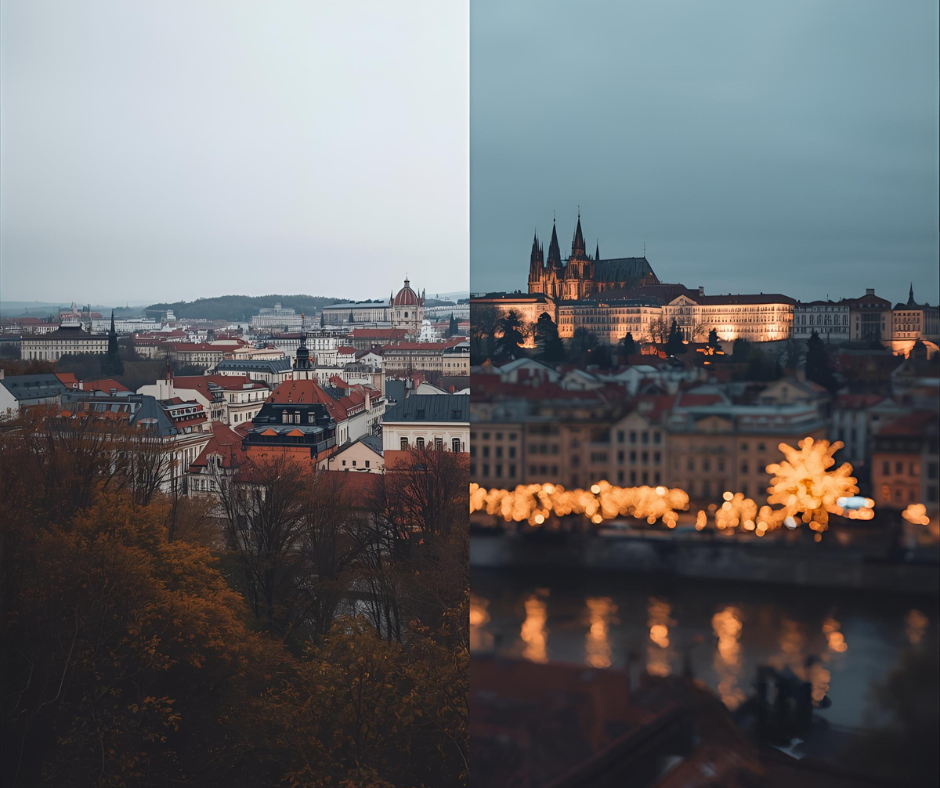
The Magic of Transformation: Why This Journey Matters
These cities reveal something profound about European culture: the ability to hold darkness and light simultaneously, to acknowledge difficult history while celebrating tradition, to honor the Gothic past while creating cozy present.
The transformation from haunted halls to holiday lights isn't just seasonal marketing, it's cultural authenticity. These cities don't hide their medieval history or pretend away dark chapters. They integrate everything into comprehensive identity. The same squares that witnessed executions now host celebrations. The same churches that enforced rigid orthodoxy now welcome diverse visitors. The same castles built for warfare now symbolize heritage and beauty.
For fantasy travelers, this duality is exactly what we seek. We don't want sanitized, one-dimensional experiences. We want places where history has weight, where architecture tells stories, where current celebrations connect to centuries of tradition. We want places that earn their magic through authenticity rather than invention.
These October-to-December transformations prove that fantasy travel isn't about escaping reality, it's about finding where reality becomes most enchanting. The Gothic architecture exists. The medieval history happened. The Christmas market traditions evolved organically over centuries. The cozy warmth of Glühwein-filled mugs against cold air is genuine comfort, not theatrical staging.
When you stand in Prague's Old Town Square, watching the astronomical clock perform its medieval dance while Christmas market lights twinkle and Gothic spires loom above, you're experiencing layers of time simultaneously. October's ghosts haven't left, they've just stepped aside to make room for December's warmth. Both exist in the same space, the same stones, the same cultural memory.
This is fantasy travel at its finest: finding real places so rich with history, atmosphere, and tradition that they fulfill the promises fantasy literature makes. These cities deliver what Narnia, Hogwarts, and Middle-earth taught us to crave, places where magic is real because humanity made it real through centuries of culture, craft, and celebration.
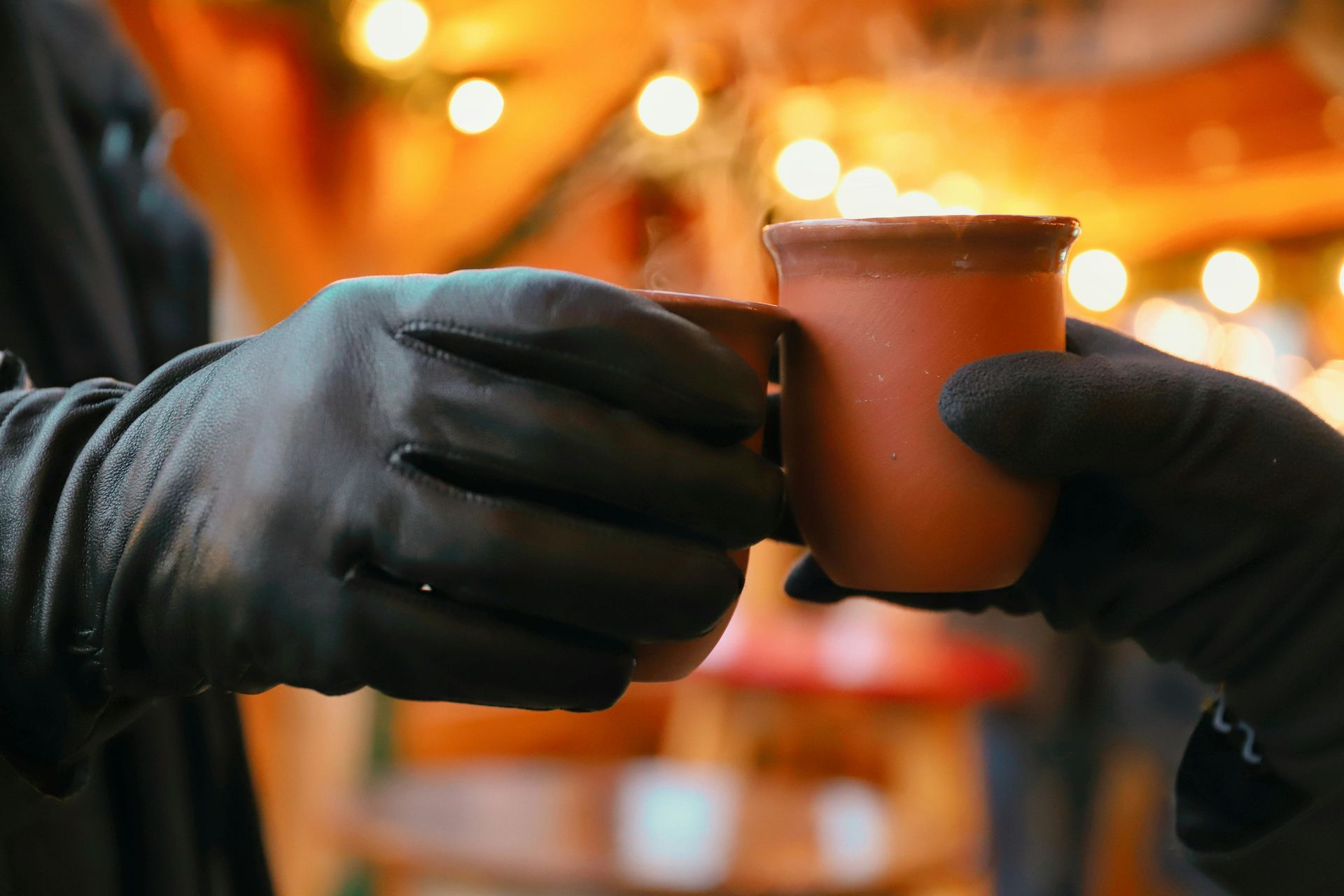
Ready to Experience the Transformation?
Whether you're drawn to Prague's alchemical mysteries that give way to sparkling markets, Vienna's imperial elegance in both shadow and light, Edinburgh's Celtic darkness transforming to Hogmanay celebration, or Germany's Gothic cathedrals embracing Christmas tradition, these destinations offer experiences that transcend typical tourism.
At Flights & Fables, I specialize in crafting journeys that capture both sides of these magical transformations. From timing your visit to experience the perfect balance of Gothic atmosphere and festive warmth, to arranging haunted castle tours combined with Christmas market exploration, to securing hard-to-get accommodations during peak season, I handle the complex logistics that make these experiences seamless.
Let's design your haunted-to-festive adventure. Whether you want to experience both seasons with separate trips, catch the transformation moment in late November, or immerse yourself in peak Christmas market magic, I'll create an itinerary that brings your fantasy winter travel dreams to life.
Book a discovery call to start planning your journey from darkness into light.
Ready to explore more fantasy destinations and seasonal magic? Check out our guides to
castles across Europe,
winter fantasy escapes,
christmas markets and events, and
European river cruises
that combine multiple magical destinations.


